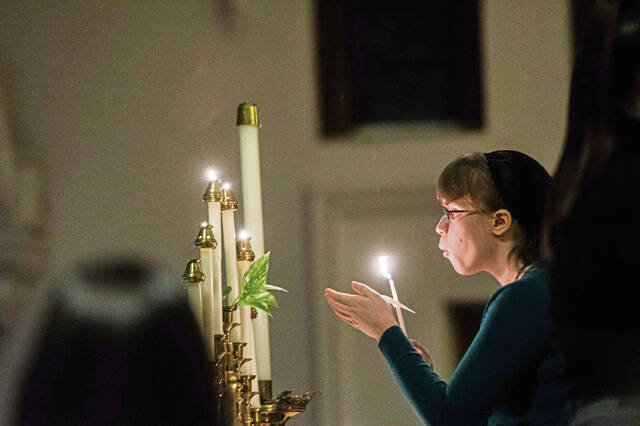https://triblive.com/local/westmoreland/monessen-program-to-explore-italian-jews-history-and-persecution/
Monessen program to explore Italian Jews, history and persecution

The flight of Jews from Spain to Italy — and, ultimately, to places like Western Pennsylvania — is a largely unknown tale.
An Italian-Jewish historic program this weekend in Monessen, which has been two years in the making, intends to shed light on this part of international and local history.
“They were forced to leave Spain in the 1500s, and some went to southern Italy and Sicily. It’s not that well known,” said S. Fred Natale, an organizer of the Italian Jewish Historical Program. “I am Italian, but I could be Jewish, too.”
At noon Sunday in the St. Vincent de Paul Society’s Jozwiak Hall, 1701 Grand Blvd., Pittsburgh native Rabbi Barbara Aiello will present the interactive live presentation from her home in Calabria, Italy. She plans to explain how the Jewish immigrants from Spain assimilated into Italy.
Her story will reveal the Jewish origin of many Italian surnames, including ones found in Western Pennsylvania: Aiello, Barone, Bruno, Costantino, Del Vecchio, Greco, Gentile, Leone, Marino, Pugliese, Renda, Russo, Rotoli, Spagnolo and Vitale.
The story is personal for Aiello. Her family fled from Italy to America and came to Pittsburgh, said Rabbi Lenny Sarko, leader of Congregation Emanu-El Israel in Greensburg. He attended seminary with Aiello.
According to the U.S. Holocaust Memorial Museum, Sephardim — or Sephardic Jews — were descendants from the Iberian Peninsula in the late 15th century. The Italian Jewish population, one of the oldest in Europe, numbered about 50,000 in 1933, the Washington, D.C.-based museum reports.
By the outbreak of World War II in 1939, there were about 45,000 Jews in Italy, according to the Life in Italy website. About 8,500 were deported. About 7,800 died.
Though Italian Jews suffered from persecution under Fascist dictator Benito Mussolini, they suffered more when Mussolini’s regime was overthrown in 1943 and Germans took control of the country, Natale said.
Part of what Aiello will discuss is the story of the Ferramonti di Tarsia, a concentration camp in southern Italy. That story celebrates the bravery of the Italian soldiers who protected Jewish prisoners, as well as the townspeople, who protected them from the Nazis, Natale said.
Jews were sent to internment camps in Italy, where some were forced to become laborers under the Nazis, before being deported to concentration camps, said Sarko, who will say prayers during the event.
“You can’t compare that to the 6 million (Jews in all of Europe) who were killed by the Germans” in concentration camps and elsewhere, Natale said, “but it’s important to” their families.
The displacement of the Jews from their homes in Italy and other countries under the Nazi rule remains relevant because it is similar to what is occurring in Ukraine, Sarko said, with the Russians bombing civilian targets.
“The stuff that was happening to (Italian Jews) did not stop back then,” he said, referring to World War II. “It is applicable to what is happening today … with refugees who need housing, food and places to work. This is real.”
Copyright ©2025— Trib Total Media, LLC (TribLIVE.com)
